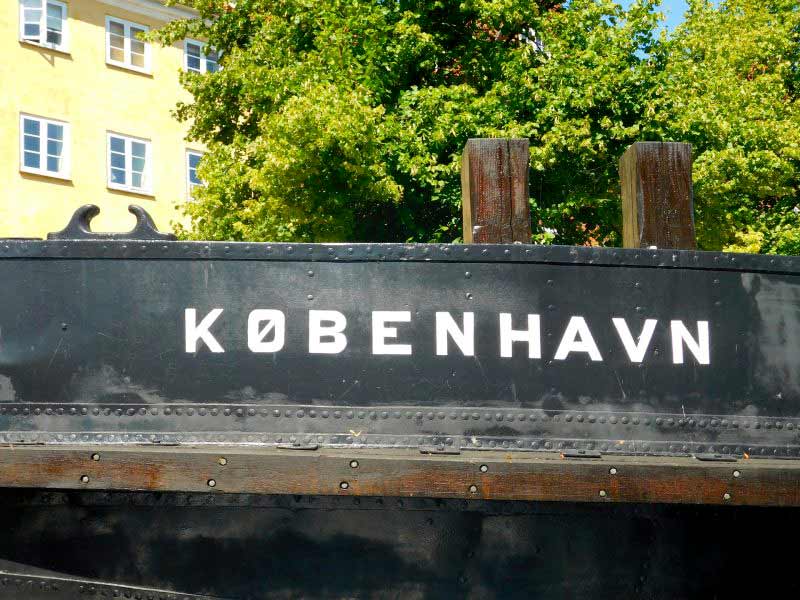Located on the eastern coast of the country, Denmark’s capital city of Copenhagen is one of the most beautiful and historical cities in all of northern Europe – as well as a fantastic location to base yourself in if you plan to travel, as neighbouring Sweden and Norway are just a short trip across the water. Copenhagen is also described as the happiest city on Earth. Read on to find out why!
History
Denmark’s capital city since 1443, Copenhagen started life as a merchant city. Its recorded history dates back as far as the 11th Century, though of course there are many tales of Viking rule that predate this; more on that can be found under Culture and Attractions.
With a rich and varied past, Copenhagen is a dream city for military history buffs. The city endured throughout several decimating fires during the 18th Century, a number of 19th Century wars and conflicts (including an 1801 battle with Lord Horatio Nelson which he deemed the toughest conflict of his career, which was followed some years later by a pre-emptive British invasion that destroyed several civilian homes and is considered the first major terrorist attack in European history) and Nazi occupation during WWII.
Language and Climate
Obviously, Danish the primary language of Copenhagen, though other small pockets of the country also communicate in German, Faroese and Greenlandic. Like most Scandinavian territories, however, Denmark also has a 99% literary rate in English, so you should find that many natives speak have a stronger grasp on the language than your average Brit.
If you’re adverse to cold weather, you should steer well clear throughout the winter months – Copenhagen temperatures frequently drop below freezing in December, January and February, and the city will not get much toastier until around May. June, July and August enjoy a warmer climate, often reaching up to 21 degrees.
Where to Stay in Copenhagen
There are a number of different districts within Copenhagen, and each of them offers a different experience for a visitor. Where you decide to stay depends on what you are looking for from you time in this wonderful city.
Carlsberg, named after the famous lager that is brewed in the district, may describe itself as probably the best suburb of Copenhagen, and it could be right – it plays host to a number of cultural highlights such as dance schools, theatres and art galleries. Østerbro is largely residential, but could be worth investigating if travelling with children – this district is packed with parks and playgrounds.
If you’d rather hang with the young and hip crowd, head to Nørrebo, a multi-cultural hotbed of bars and restaurants, or Vesterbro, formerly Copenhagen’s red light district but now the trendiest territory in town. Finally, if you’re a fan of alternative lifestyles then Christiana could be for you. Founded by hippies in 1971, Christiana is an eco-friendly area with no cars and a separate societal rule from the laws laid down by the Danish government.
Getting Around Copenhagen
Unlike many major cities, Copenhagen is equally negotiable by car, foot or public transport. If you decide to hire a car for your visit you should not be embattled by too much traffic. If you do drive, however, ensure that you respect the clearly defined cycle lanes marked out in the roads – Copenhagen rivals Amsterdam as the most bicycle-friendly city in Europe. Best of all, for just DKR25 per hour you can hire a ‘smart bike’; a GPS-equipped pedal pusher that will help you get around the city in no time. Just be sure to familiarise yourself with Copenhagen cycle etiquette – absolutely no texting while riding, stay off the pedestrian streets, always signal before making a manoeuver, and keep to the right unless overtaking.
If all that exercise sounds exhausting, there are also plentiful public transport options in the city. Purchasing a Copenhagen Card upon arrival (you can even pick one up at the airport) will entitle you to unlimited travel on any of the city centre’s services, as well as free entry to a number of attractions.
You will never have to wait more than 20 minutes for a bus in Copenhagen (rarely more than 10), and they will take you all over the city. There is also a reliable and punctual 24-metro metro service. You won’t find a tram, though – despite Copenhagen being the first European city to introduce these modes of transport, the last one was removed in 1972.
Culture and Attractions
As previously intimated, Copenhagen is all about the history. Don’t make the mistake of thinking that this means there’s nothing to do for anybody more interested in the here and now – more on that later – but if you’re a sucker for the past you’ll be in seventh heaven in this ancient city.
Viking legend plays a major role in Copenhagen, and if you’re interesting in learning about these burly beserkers you can fill your boots at The Viking Ship Museum and the open-air wonder of the Lejre Land of Legends (both of which offer entry with the aforementioned Copenhagen Card), the nearby Viking settlement villages of Frederikssund and Albertslund, or drive for around an hour to Trellesborg to visit the Viking fortress.
If you’re looking for a more sedate history lesson, investigate the National Museum, the 104-year-old Little Mermaid statue, Cristiansborg Palace (the seat of power in Denmark) and it’s 11th Century ruins, or regal castles like Amalienborg Palace, Rosenborg Castle or Frederiksborg Castle.
All of these attractions offer free entry with the Copenhagen Card, as does the city zoo, aquarium, planetarium, Museum of Modern Art, Natural History Museum and many, many more sites. The Carlsberg brewery is open to tours, the Botanical Gardens are a must-see for any green-thumbed visitor, and rollercoaster fans will delight in the two theme parks; Tivoli Gardens and Bakken, the oldest attraction of its type in the world. If all that sounds exhausting and you simply want to get some shopping done head to Strøget, or relax at one of the beaches at Amager or Bellevue.
Eating out in Copenhagen
Copenhagen was not always famed for gastronomic excellence, and it’s safe to say that sandwiches and strong coffee remain the staple diet of most Scandinavian cities, but a reputation for culinary culture is slowly being forged. Smørrerbrød – open sandwiches – remain the primary choice, however. Sausage wagons also populate the city if hot dogs tickle your fancy, and if you’re environmentally conscious, investigate the Rub and Stub restaurant, home to ‘recycled’ food; namely, misshapen vegetables deemed ‘too ugly’ to be sold elsewhere, and used for delicious dishes here instead of adding to the chronic food waste that plagues the western world.


